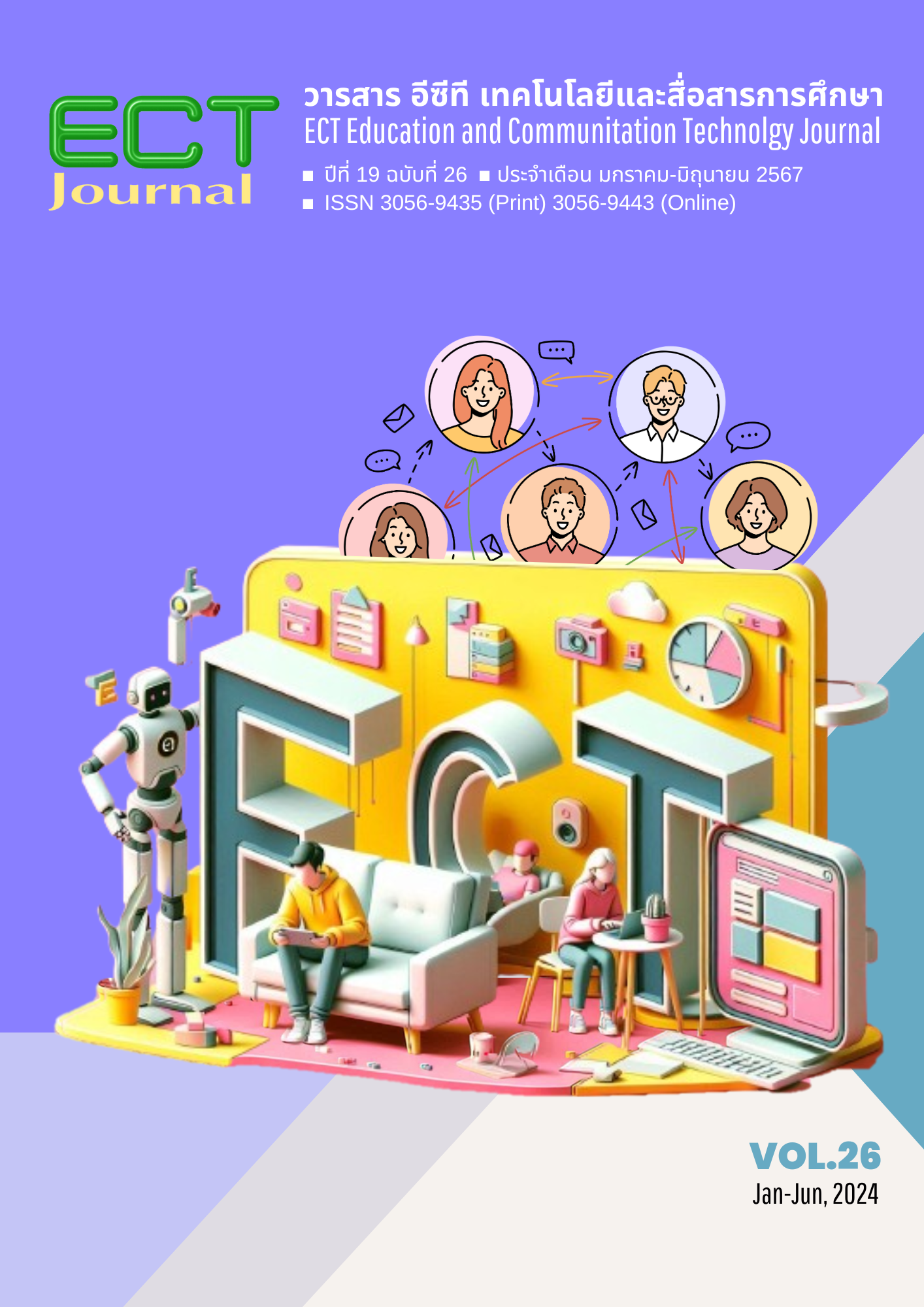Development of “PLEARN” Model through Podcasts in the Distance Education System
Keywords:
Distance Education, Podcasts, Podcast Learning Management ModelAbstract
This research aimed to 1) develop a teaching and learning “PLEARN” model through podcasts in the distance education system and 2) study the results of teaching and learning “PLEARN” model through podcasts in the distance education system. The sample used in the research were 34 students who enrolled the 16455 Content Creation and Streaming Course in the distance education system, Sukhothai Thammathirat Open University, on the second semester of the academic year 2022, obtained by purposive sampling method. The research tools consisted of 1) the teaching and learning "PLEARN" model through podcasts in the distance education system 2) the learning achievement test from the "PLEARN" learning before and after the treatment, and 3) a questionnaire for assessing student satisfaction towards the teaching and learning “PLEARN” model. The data were analyzed by t-test analysis, means, percentages, and standard deviation.
The research results were as follows: 1) the teaching and learning "PLEARN" model through podcasts in the distance education system consisted of six components are to (1) the podcast media, (2) the content, (3) the steps and learning activities, (4) the learners, (5) the instructors and (6) the evaluation. The learning activities consisted of five steps which are (1) the learning from podcast media to education, (2) the stimulating learning (3) the proactive learning, (4) the summarizing learning, and (5) the sharing knowledge. The over all result of the assessment of teaching and learning model of “PLEARN” by the experts in terms of learning application was at the highest level (M = 4.67, SD = 0.58). 2) The results of teaching and learning of “PLEARN” model through podcasts in the distance education system found that: (1) the comparison of mean in teaching and learning “PLEARN” model had the posttest score higher than the pretest score with statistical significance at the level of .05, and (2) the satisfaction assessment results of the sample group of the teaching and learning "PLEARN" model through podcasts was at the highest level (M= 4.53, SD = 0.51).
References
เขมณัฏฐ์ มิ่งศิริธรรม. (2560). รายงานการวิจัย เรื่อง การใช้สื่อผสมผสานในการศึกษาทางไกลระดับอุดมศึกษา. สถาบันวิจัยและพัฒนา มหาวิทยาลัยสุโขทัยธรรมาธิราช.
ใจทิพย์ ณ สงขลา. (2561). การออกแบบการเรียนแนวดิจิทัล. จุฬาลงกรณ์มหาวิทยาลัย.
ชนินทร เพ็ญสูตร. (2561). พอดแคสต์ สื่อทางเลือกใหม่: กรณีศึกษาเปรียบเทียบระหว่างสหรัฐอเมริกาและไทย. วารสารวิชาการ กสทช., 3, 272-289.
นิษฐา หรุ่นเกษม. (2560). การเลือกและการสร้างสารสำหรับการสื่อสารชุมชน. ใน เอกสารการสอนชุดวิชาความรู้และทักษะการสื่อสารชุมชน (หน่วยที่ 4). มหาวิทยาลัยสุโขทัยธรรมาธิราช.
ปวรรัตน์ ระเวง. (2560). การรู้เท่าทันสื่อดิจิทัลของผู้ฟังรายการพอดคาสต์ [วิทยานิพนธ์ปริญญามหาบัณฑิต ไม่ได้ตีพิมพ์]. จุฬาลงกรณ์มหาวิทยาลัย.
พูนสุข อุดม. (2554). การจัดการเรียนการสอนวิทยาศาสตร์ที่กระตือรือร้น (ATLAS). วารสารศึกษาศาสตร์มหาวิทยาลัยสงขลานครินทร์ วิทยาเขตปัตตานี, 2(3), 1-15.
มูหาหมัด สาแลบิง และกัลยาณี เจริญช่าง นุชมี. (2560). ผลการเรียนรู้ด้วยพอดแคสต์เพื่อส่งเสริมทักษะการสื่อสารภาษามลายู สำหรับนักศึกษาปริญญาตรี. วารสารอัลฮิกมะฮฺ มหาวิทยาลัยฟาฏอนี, 7(13), 37-44. https://so01.tci-thaijo.org/index.php/HIKMAH/article/view/112344
Fietze, S. (2009). Podcast in higher education: Students usage behavior. In Proceedings of Ascilite Auckland 2009 (pp. 314-318).
Kay, R., & Kletskin, I. (2012). Evaluating the use of problem-based video podcasts to teach mathematics in higher education. Computers & Education, 59(2), 619-627. https://doi.org/10.1016/j.compedu.2012.03.007
Samuel-Azran, T., Laor, T., & Tal, D. (2019). Who listens to podcasts, and why?: The Israeli case. Online Information Review, 43(4), 482-495. https://doi.org/10.1108/OIR-04-2017-0119
Downloads
Published
How to Cite
Issue
Section
License
Copyright (c) 2024 มหาวิทยาลัยสุโขทัยธรรมาธิราช

This work is licensed under a Creative Commons Attribution-NonCommercial-NoDerivatives 4.0 International License.
1. ทรรศนะและข้อคิดเห็นใด ๆ ที่ปรากฏอยู่ในวารสาร ECT Education and Communication Technology Journal เป็นของผู้เขียนโดยเฉพาะ สำนักเทคโนโลยีการศึกษา มหาวิทยาลัยสุโขทัยธรรมาธิราช และกองบรรณาธิการไม่จำเป็นต้องเห็นพ้องด้วย
2. กองบรรณาธิการของสงวนลิขสิทธิ์ในการบรรณาธิการข้อเขียนทุกชิ้น เพื่อความเหมาะสมในการจัดพิมพ์เผยแพร่






